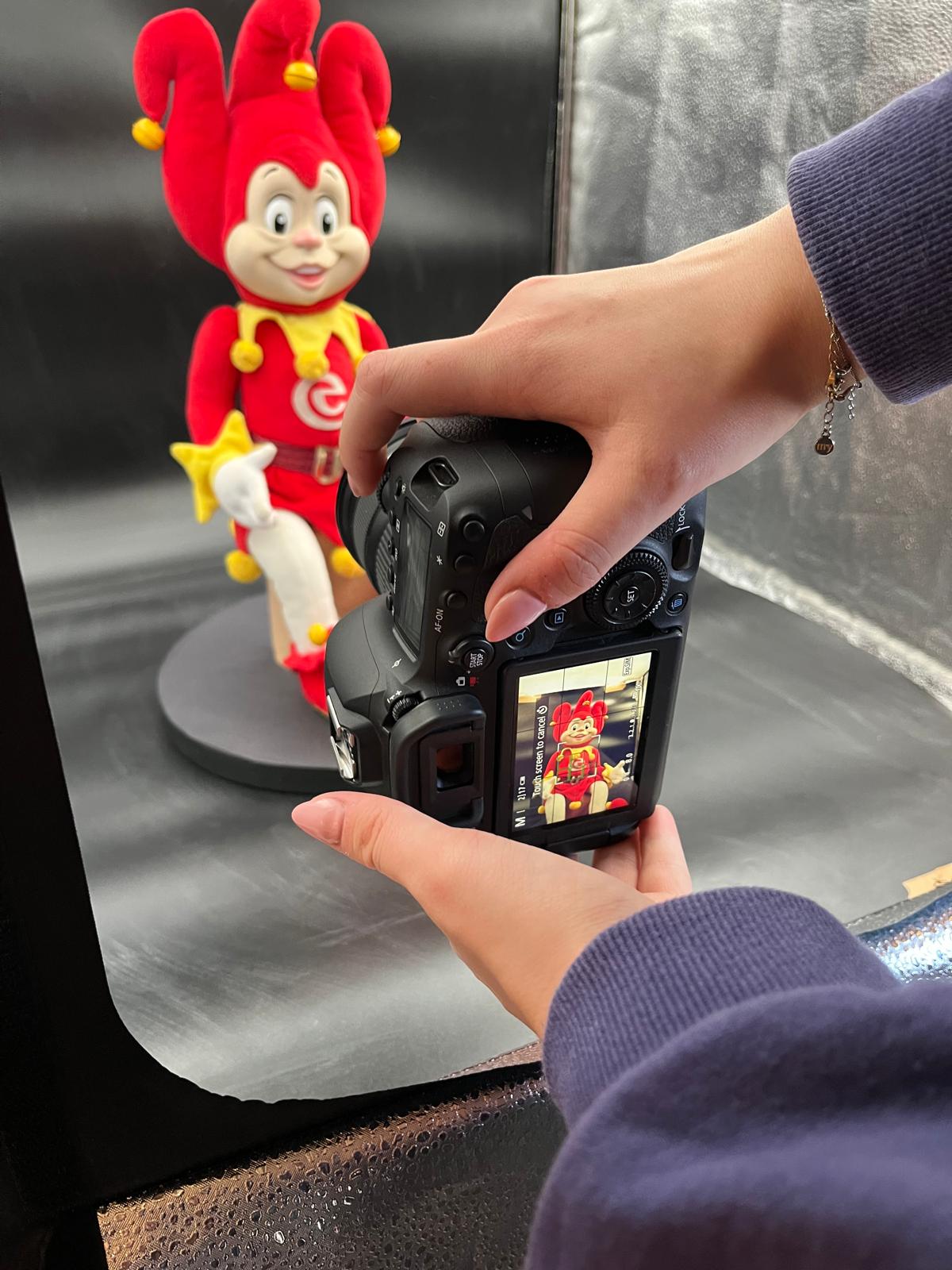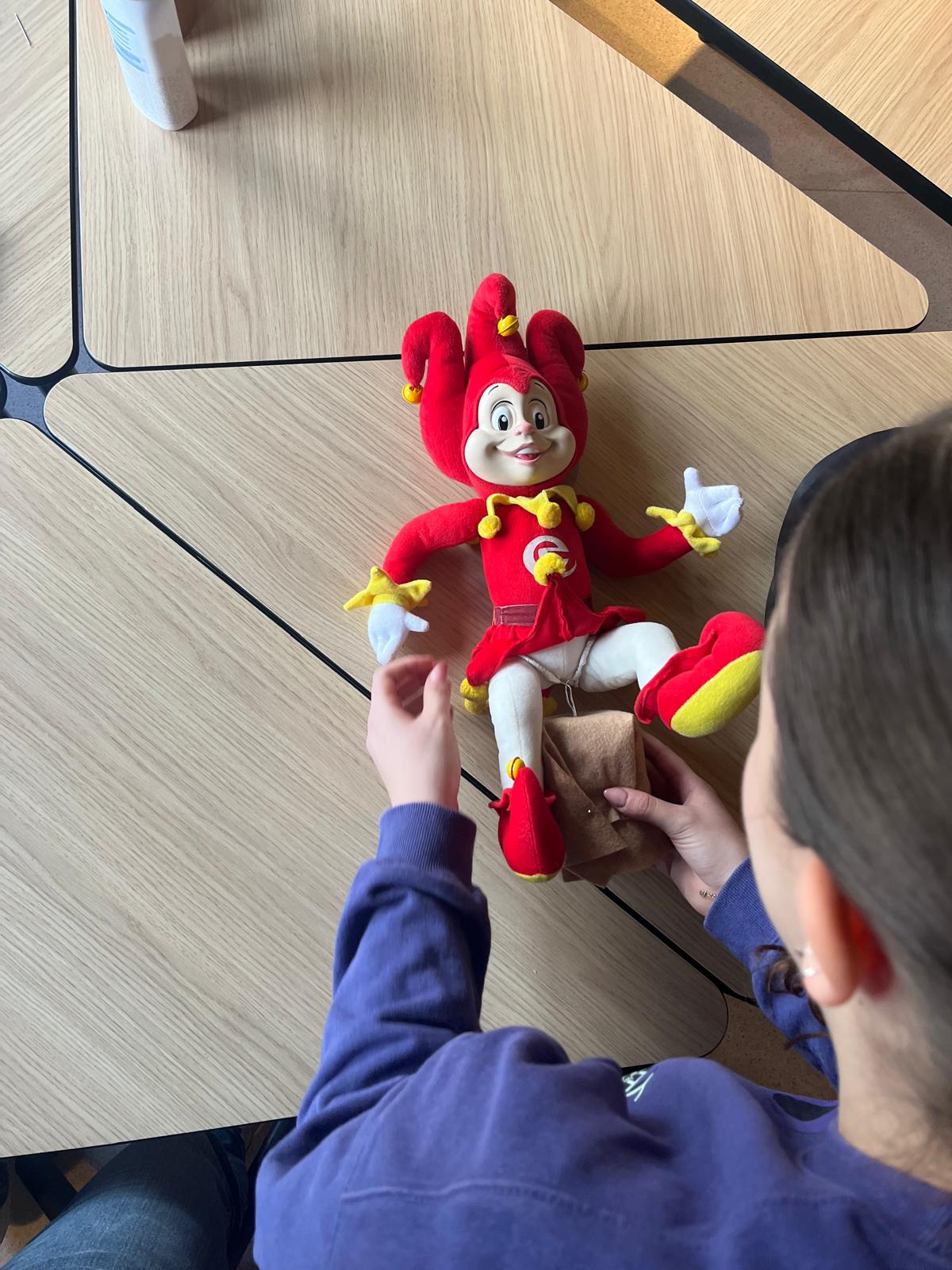
Construction of the 3D model of Pardoes required careful planning, a step-by-step approach, and a combination of photogrammetry and structural engineering. Photogrammetry, the "art, science, and technology of obtaining reliable information about physical objects through photographic images" (Luhmann et al., 2019), according to the American Society of Photogrammetry and Remote Sensing, was the cornerstone of the project. Out of over 300 high-quality photographs taken from different angles in an upright position, we constructed a precise digital model of Pardoes.

An image we took during the capturing process that shows how to hold the camera
For full coverage, we captured photographs from bottom, mid, and top-level each overlapping adjacent photographs by 60–80%. The overlap allowed the photogrammetry software to triangulate common points between photographs and match them accurately (Schenk, 2005). We used diffused lighting to prevent shadows and reflections, keeping Pardoes' costume in its original texture and colors. The images were then passed through photogrammetry software, which generated a sparse point cloud, expanded it to a dense point cloud, and finally created a full 3D mesh and texture (Aber et al., 2010).
This picture shows the beginning of our engineering to make sure Pardoes did not move during the capturing
It required some engineering to provide support for Pardoes during the photo session. To allow the support to remain hidden from view while keeping the figure upright, we constructed a mesh of thin metal wire. The wire encircled the neck of Pardoes, ran beneath the collar, and along the body and the arms, where it was secured to a base of floral foam. The foam was draped in beige fabric so that it would blend with Pardoes' attire.

The end result of our engineering, with fabric on the floral foam to cover it up
It was necessary to hide the wire to maintain visual integrity. We wrapped the wire in red insulation tape on the body and white tape on the legs to match the costume. We also carefully pinned certain moving parts of the costume and opened the skirt slightly to reveal the tag. The tag itself was secured with double-sided tape so that it could be removed easily.
This combination of photogrammetry and outside-the-box thinking with positioning allowed us to create an accurate, lifelike digital twin of Pardoes, highlighting the flexibility of photogrammetry for the digitization of cultural heritage (Prins & Adams, 2012). By means of this blend of technology and innovative problem-solving, we could create a model that preserves Pardoes' unique character and costume detail for archive and educational use.